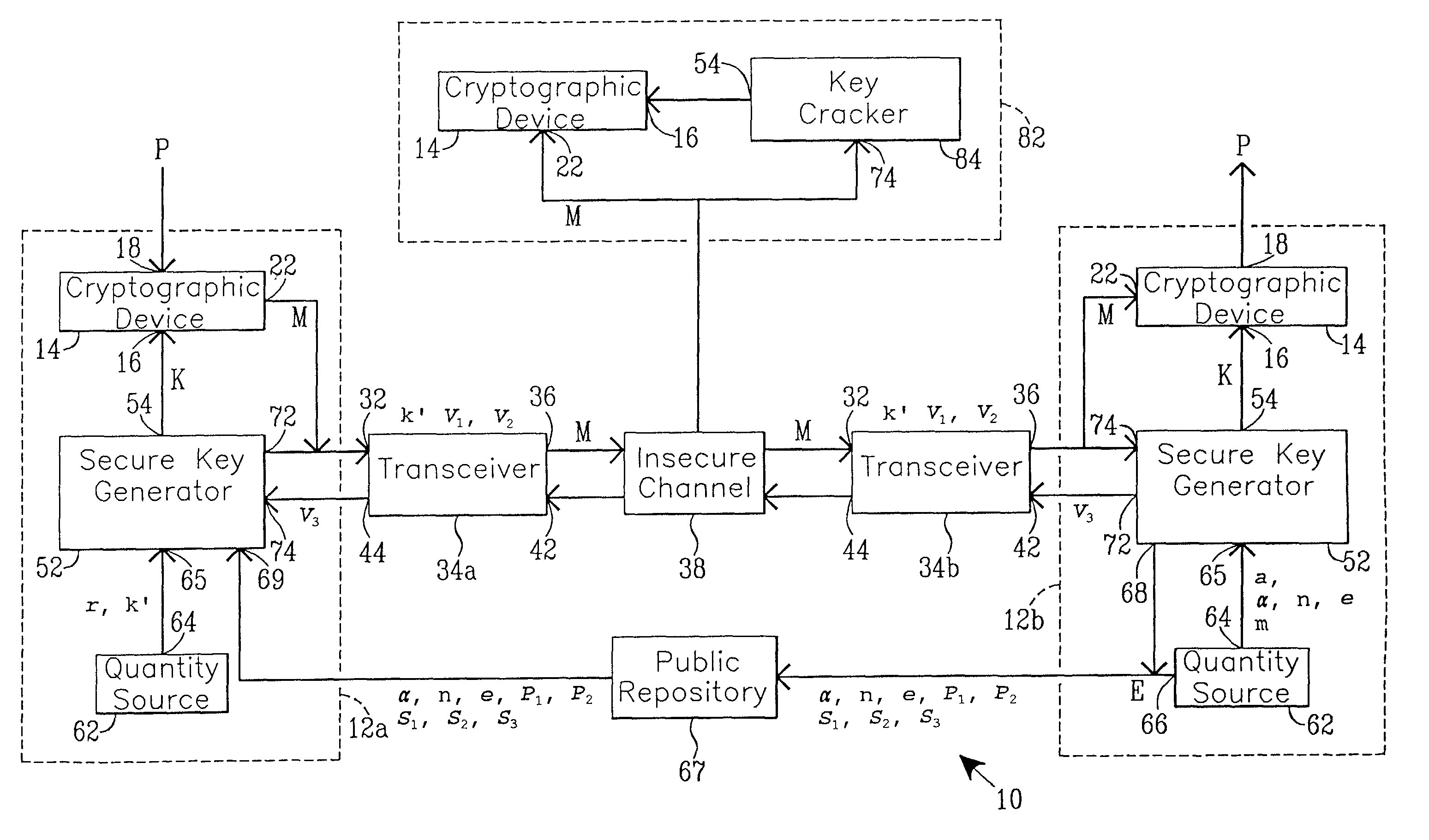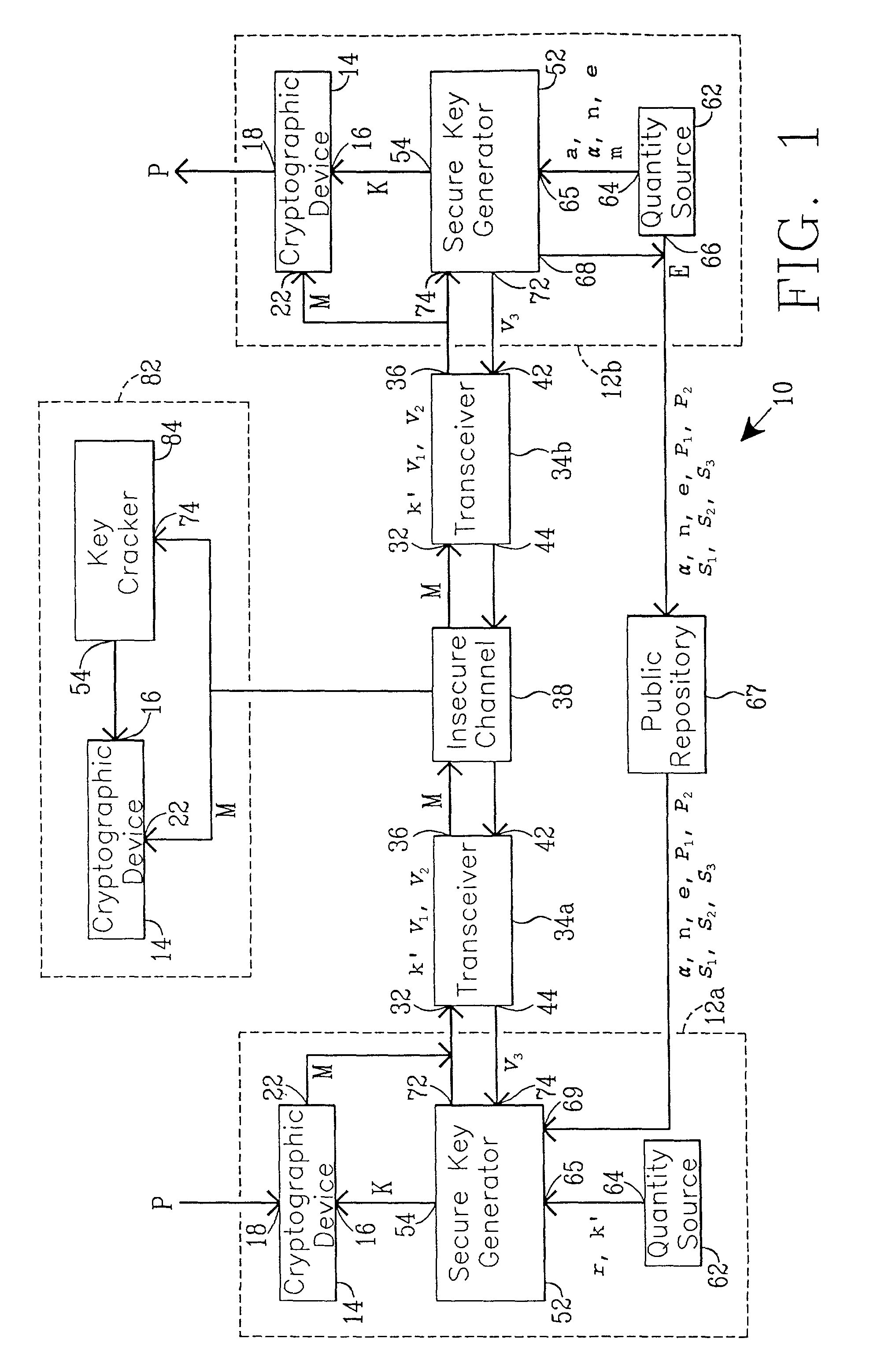Simplified secure, swift cryptographic key exchange
- Summary
- Abstract
- Description
- Claims
- Application Information
AI Technical Summary
Benefits of technology
Problems solved by technology
Method used
Image
Examples
Embodiment Construction
[0044]FIG. 1 illustrates a cryptographic system which may be employed for cryptographic key exchange that is referred to by the general reference character 10. The cryptographic system 10 includes a sender's cryptographic unit 12a, enclosed within a dashed line, and a receiver's cryptographic unit 12b, also enclosed within a dashed line. One particular unit has been assigned as the sender's cryptographic unit 12a and another unit has been assigned as the receiver's cryptographic unit 12b only for pedagogical reasons. In principle, either unit could be the sender or the receiver. Each of the cryptographic units 12a and 12b respectively includes a cryptographic device 14. Each cryptographic device 14 includes a key input port 16, a plaintext port 18, and a cyphertext port 22.
[0045]The illustration of FIG. 1 depicts the cyphertext port 22 of the cryptographic device 14 included in the sender's cryptographic unit 12a as being coupled to a first input port 32 of a first transceiver 34a. ...
PUM
 Login to View More
Login to View More Abstract
Description
Claims
Application Information
 Login to View More
Login to View More - R&D
- Intellectual Property
- Life Sciences
- Materials
- Tech Scout
- Unparalleled Data Quality
- Higher Quality Content
- 60% Fewer Hallucinations
Browse by: Latest US Patents, China's latest patents, Technical Efficacy Thesaurus, Application Domain, Technology Topic, Popular Technical Reports.
© 2025 PatSnap. All rights reserved.Legal|Privacy policy|Modern Slavery Act Transparency Statement|Sitemap|About US| Contact US: help@patsnap.com



